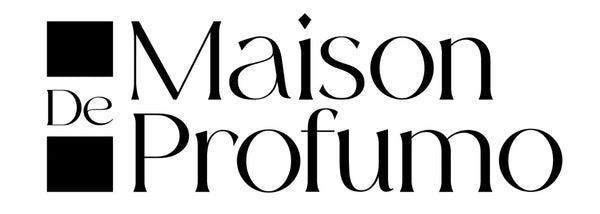Unusual Perfume Ingredients: The Strange and Surprising Secrets of Scent Making
Introduction
Perfumery, an art that dates back to ancient civilizations, has always intrigued people with its captivating scents. However, behind many luxurious fragrances are ingredients that might surprise or even repel the average person. These unconventional and sometimes revolting ingredients play a crucial role in creating the complex and alluring scents we adore. This article delves into the world of these peculiar components, exploring their origins, characteristics, and contributions to perfumery.
Exploring Unusual Ingredients in Perfumery

1. Animal-Derived Ingredients
1.1 Civet
- Source: Secretions from the perineal glands of the African civet cat.
- Characteristics: Strong, fecal odor in raw form; transforms into a warm, musky scent when diluted.
- Use in Perfumery: Adds depth and warmth; used in classic perfumes like Chanel No. 5.
1.2 Ambergris
- Source: Digestive byproduct of sperm whales, often found floating in the ocean or washed ashore.
- Characteristics: Initially has a marine, fecal odor; matures into a sweet, earthy scent.
- Use in Perfumery: Enhances longevity and diffusion of fragrances; found in perfumes like Creed Aventus.
1.3 Castoreum
- Source: Glandular secretions from the beaver.
- Characteristics: Intense, leathery, and smoky odor.
- Use in Perfumery: Adds a rich, animalic quality; used in leather and chypre fragrances.
2. Plant-Derived Ingredients
2.1 Patchouli
- Source: Leaves of the patchouli plant, native to tropical regions of Asia.
- Characteristics: Earthy, woody, and slightly sweet aroma.
- Use in Perfumery: Provides a deep, grounding note; widely used in oriental and woody fragrances.
2.2 Oud (Agarwood)
- Source: Resinous heartwood from Aquilaria trees infected with a specific mold.
- Characteristics: Rich, complex scent with woody, smoky, and sweet facets.
- Use in Perfumery: Adds opulence and depth; featured in niche and luxury perfumes like Tom Ford Oud Wood.
2.3 Myrrh
- Source: Resin from the Commiphora tree.
- Characteristics: Warm, balsamic, and slightly medicinal aroma.
- Use in Perfumery: Enhances oriental and balsamic compositions; used in perfumes like Yves Saint Laurent Opium.
3. Synthetic Ingredients
3.1 Iso E Super
- Source: Laboratory-created molecule.
- Characteristics: Woody, amber-like scent with a velvety finish.
- Use in Perfumery: Provides a subtle yet long-lasting base note; used in fragrances like Molecule 01 by Escentric Molecules.
3.2 Calone
- Source: Synthetic compound.
- Characteristics: Fresh, aquatic scent reminiscent of sea breeze.
- Use in Perfumery: Adds a marine, ozonic quality; prominent in fragrances like Acqua di Gio by Giorgio Armani.
3.3 Aldehydes
- Source: Synthetic organic compounds.
- Characteristics: Varying scents from soapy and metallic to fresh and citrusy.
- Use in Perfumery: Adds a sparkling, effervescent quality; famously used in Chanel No. 5.
4. Unusual and Revolting Ingredients
4.1 Skatole
- Source: Naturally found in feces and certain flowers; also synthesized.
- Characteristics: Fecal odor at high concentrations; floral and musky at low concentrations.
- Use in Perfumery: Adds depth and complexity; used in trace amounts to enhance floral compositions.
4.2 Indole
- Source: Present in jasmine, orange blossom, and fecal matter.
- Characteristics: Fecal odor in pure form; contributes to the narcotic scent of white flowers.
- Use in Perfumery: Adds richness and sensuality to floral fragrances; key component in many classic florals like Robert Piguet's Fracas.
4.3 Hyraceum (Africa Stone)
- Source: Fossilized excrement and urine of the rock hyrax.
- Characteristics: Intense, animalic odor with nuances of musk and civet.
- Use in Perfumery: Adds a potent, animalic quality; used in niche perfumery.
Detailed Profiles of Unusual Ingredients
1. Animal-Derived Ingredients
1.1 Civet
Civet is derived from the perineal glands of the African civet cat. In its raw form, civet has a strong, fecal odor that can be off-putting. However, when properly diluted and processed, it transforms into a warm, musky scent that adds depth and warmth to fragrances. Historically, civet has been a key ingredient in many classic perfumes, providing a luxurious and animalic undertone. Despite ethical concerns, synthetic alternatives are now commonly used.
1.2 Ambergris
Ambergris, often referred to as "floating gold," is a rare substance produced in the digestive system of sperm whales. Initially, it has a marine, fecal odor but matures over time into a sweet, earthy scent. Ambergris enhances the longevity and diffusion of fragrances, making it highly prized in perfumery. Its unique aroma has graced many luxurious perfumes, contributing to their complex scent profiles.
1.3 Castoreum
Castoreum is obtained from the glandular secretions of beavers. It possesses an intense, leathery, and smoky odor, making it a distinctive ingredient in perfumery. Castoreum adds a rich, animalic quality to fragrances, particularly in leather and chypre compositions. Its potent aroma creates a sense of warmth and depth, enhancing the overall fragrance experience.
2. Plant-Derived Ingredients
2.1 Patchouli
Patchouli is derived from the leaves of the patchouli plant, which is native to tropical regions of Asia. Its earthy, woody, and slightly sweet aroma provides a deep, grounding note in perfumery. Patchouli is widely used in oriental and woody fragrances, adding a rich and sensual character. Its unique scent profile makes it a beloved ingredient in both classic and contemporary perfumes.
2.2 Oud (Agarwood)
Oud, also known as agarwood, is a resinous heartwood that forms in Aquilaria trees infected with a specific mold. Oud has a rich, complex scent with woody, smoky, and sweet facets. Its opulence and depth make it a sought-after ingredient in niche and luxury perfumery. Oud's captivating aroma is featured in many high-end fragrances, contributing to their allure and sophistication.
2.3 Myrrh
Myrrh is a resin obtained from the Commiphora tree. It has a warm, balsamic, and slightly medicinal aroma that enhances oriental and balsamic compositions. Myrrh's historical significance and unique scent profile make it a valuable ingredient in perfumery. It is used in perfumes like Yves Saint Laurent Opium, adding a rich and exotic character to the fragrance.
3. Synthetic Ingredients
3.1 Iso E Super
Iso E Super is a laboratory-created molecule known for its woody, amber-like scent with a velvety finish. It provides a subtle yet long-lasting base note in perfumery, adding a smooth and comforting quality to fragrances. Iso E Super is used in perfumes like Molecule 01 by Escentric Molecules, where it enhances the overall composition with its unique scent.
3.2 Calone
Calone is a synthetic compound with a fresh, aquatic scent reminiscent of the sea breeze. It adds a marine, ozonic quality to fragrances, creating a sense of freshness and tranquility. Calone is prominent in perfumes like Acqua di Gio by Giorgio Armani, where it contributes to the fragrance's invigorating and refreshing character.
3.3 Aldehydes
Aldehydes are synthetic organic compounds that vary in scent from soapy and metallic to fresh and citrusy. They add a sparkling, effervescent quality to fragrances, creating a sense of brightness and vivacity. Aldehydes are famously used in Chanel No. 5, where they contribute to the fragrance's iconic and timeless character.
4. Unusual and Revolting Ingredients
4.1 Skatole
Skatole is naturally found in feces and certain flowers and can also be synthesized. At high concentrations, it has a fecal odor, but at low concentrations, it imparts a floral and musky scent. Skatole is used in trace amounts to enhance the depth and complexity of floral compositions, adding an intriguing and unique quality to perfumes.
4.2 Indole
Indole is present in jasmine, orange blossom, and fecal matter. In its pure form, it has a fecal odor, but it contributes to the narcotic scent of white flowers in perfumery. Indole adds richness and sensuality to floral fragrances, playing a key role in many classic floral perfumes like Robert Piguet's Fracas.
4.3 Hyraceum (Africa Stone)
Hyraceum, also known as Africa Stone, is fossilized excrement and urine of the rock hyrax. It has an intense, animalic odor with nuances of musk and civet.

